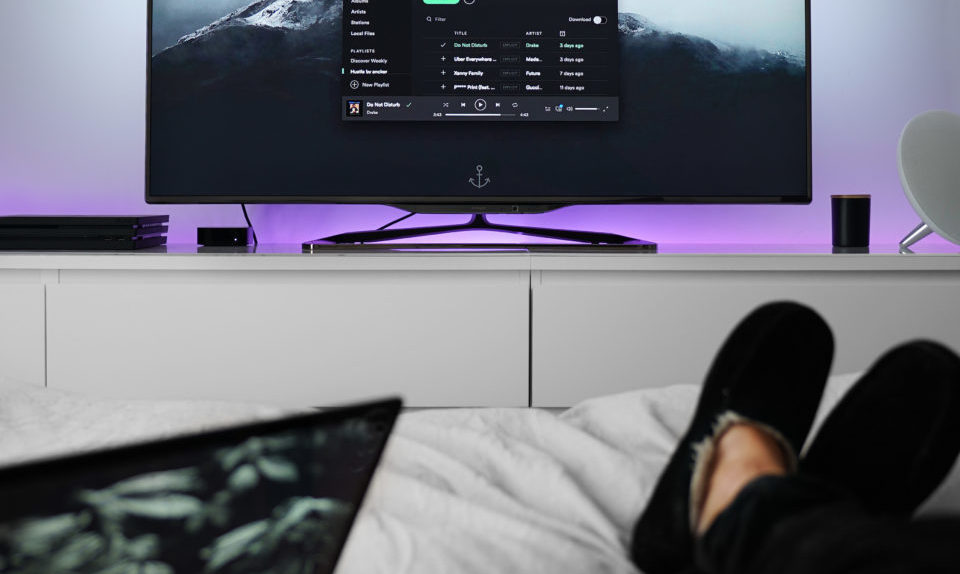OLEDs, Google TV, holographic displays, UDTVs and more will change the way we watch television
Television has long been the preserve of the masses and the classes for the last several decades. But only now is it coming into its own. The promise of watching 3D television is already rearing its protruding head. Now all one needs to wait for are TV programmes made in 3D. But for that to happen, all channels need to be in HD (high definition). In India, only Discovery can claim that. So while you might get to swim underwater from the comforts of your drawing room, you still have to wait awhile before you could get close with your favourite Hollywood hottie.
So what could very well be the face of Television 3.0? Well, two years ago, people wondered if Hulu was the future of television. Today, they are wondering if Google TV will change the way they perceive Idiot Box. While Hulu offered people to download their favourite TV shows, commercial-free, Google is taking it many steps further. Your TV will become your internet browser and your android phone will be your remote. You can even take a picture of your favourite film scene while watching a film using Google Goggles and you can bark the name of your favourite TV show and the Google Voice app will fetch it for you. What’s more, you can even conduct a video conference from the comfort of your drawing room using Google TV-enabled set-top boxes. What does all this mean? That what you were doing on your laptop and smartphone can now be done on a bigger screen like TV. From checking emails and watching YouTube videos to reading online newspapers and magazines and playing flash games, it’s a world that we will inherit sooner rather than later.
The history
The idea of TV3.0 was created by Philip Hodges. A journalist who focusses on media and production. He based it around store-and-forward, and RSS technologies – subscribing to content we are interested in, with several ideas on its monetisation. Imagine a new digital set-top-box, build with a linux OS operating a Flash-h.264 application layer. This device can act as your media centre storing media you subscribe to via RSS. Add the feature of URLS to specific content providers as our on-demand channels. These ‘channels’ or enhanced website, are simply a Flash application promoting content that channel specialises in and of which you are likely to also be interested in. Then, if interested, subscribe to hi-quality RSS feeds making the content available automatically. We can go directly to the producer to obtain the content we are interested in. Reducing the middlemen making it cheaper to purchase and more profitable to the producer all at the same time. Pricing will become very affordable negating the need for any form of DRM. If it’s only going to cost you Rs 50 to watch a TV show, can you be bothered trying to download torrents and all the time involved in doing so? The technology is upon us, however the incumbent players or middlemen will not move on without a fight. Request non-DRM content. Take responsibility and pay for the content you favour and watch. This will only improve your viewing experience and productivity. An hour show without commercials is only 40 minutes. You just got 20 minutes back of your life.
A new dimension
If 2009 was the year of LCD and LED TVs, 2010 was all about 3D TVs. But wait, Toshiba is changing the trend: Embedding 10x times power of PC into a TV. It is powering a new 3D LED/LCD TVs with Cell processor, the same processor that powers Gaming consoles like Xbox 360 and PS3. The processor will be used to upscale normal videos to 1080p video. Upscale 60hz to 480hz; convert normal TV broadcasts, videos and games from 2D to 3D; improve/fix pixels for superior video, and provide/simulate higher contrast ratio 50,00,000:1. In essence, the Cell TV will ultimately combine elements of IPTV, multi-source file compatibility (HDD, SD, USB, etc), DLNA support for remote file sharing/streaming, and full (and largely transparent) Internet support and possibly someone will hack-in a Linux OS to leverage its processing power to make a perfect HTPC. Importantly, it will record six HD streams to the drive or storage system simultaneously. This box should be able to serve an entire home full of HD displays and enable itself to be a potential AV hub for large amounts of content. And most of all, it can show eight channels on screen at the same time—and step through each without the delay common with rival HDTVs. With Real 3d broadcasts coming within 2010 via ESPN, Sony, IMAX the experience on Cell TV is going to be even better.
The next big thing could well be holographic displays. If you are a star wars fan, Holographic TV is no alien to you. Images are projected into air, space and its 3D. On a holo-TV, images will be projected into the middle of a room as a cloud that can be enjoyed from every angle without 3D glasses and still have its richness and depth. Holo-TVs, unlike current gen TVs, would not be mounted on walls. They would resemble a small (low height) table laid on the floor, out of which Lasers would project the cloud into the middle of the room. It may even be possible to broadcast concerts in other arenas around the world and to view live, life-size sporting events in stadiums thousands of miles from the real players. NHK, the leader broadcaster in Japan, has committed to creating the first holo-TV within six years. The research is led by Jun Murai, a scientist known as ‘the father of the Japanese internet’.
So what could be next? Thinner and more efficient TVs. LG has invented one that is 6.9mm thin while Samsung’s is 7.3mm. Sony has sold an 11-inch organic LEDs and LG is selling a 15-inch OLED TV in Korea, with plans to bring it to the rest of the world later in the year. But it is still going to take some time before OLED TVs are priced competitively enough for the mass market. At this year’s CES, there were also some demos of transparent OLED displays, which let you see through them.
That’s not all. One day, you may be able to obtain customised information directly from your television’s LED backlights, thanks to a talking TV technology called ‘Visible Light Communication’. The LED lights transmit information by flickering at high frequencies; a device with a photodiode like a cell phone later picks up the transmitted signals. Next are Ultra-Definition TVs. Display sets with 240Hz refresh rates and Internet connectivity are becoming increasingly common, and 480Hz sets are slated to arrive later this year. Farther down the road, ultra definition (with 3840-by-2160-pixel resolution in place of HDTV’s 1920-by-1080-pixel resolution) could make its way into your living room. Ultra definition (UD) will become more critical as display sizes get larger. With these, viewers can zoom in to get a close-up view of the action.
Monetisation
Another area gaining momentum is TV commerce. With the click of a mouse or the touch of a screen, we’ll be able to buy products directly from video content. Imagine reserving airline tickets directly from an ad or buying clothes worn by the TV characters within the episode. In the not-too-distant future, we may start to really see TV advertising getting more targeted. Which has long been the medium’s biggest downfall. People often record shows simply because they don’t have to watch the commercials. What if the ads were targeted at the individuals watching the TV? What if they were relevant? Search advertising paved the way for this kind of relevancy, and may just be a key to the future of TV advertising in a world where viewers want their programming on demand.
So that’s what awaits you in the future of television: an immersive viewer experience, personalised content, and huge screens. It looks as though Google, Samsung and its fellow TV producers are out to make movie theatres obsolete. Sure, we still have a long way to go before our home entertainment systems look like something out of Minority Repo
rt. But some of the new technologies are pretty impressive. 3D TV that approximates what you’d get in a movie theatre, multiple monitors designed to present a wall-size picture, and ultra-definition resolution are just some of the innovations you can look forward to.

